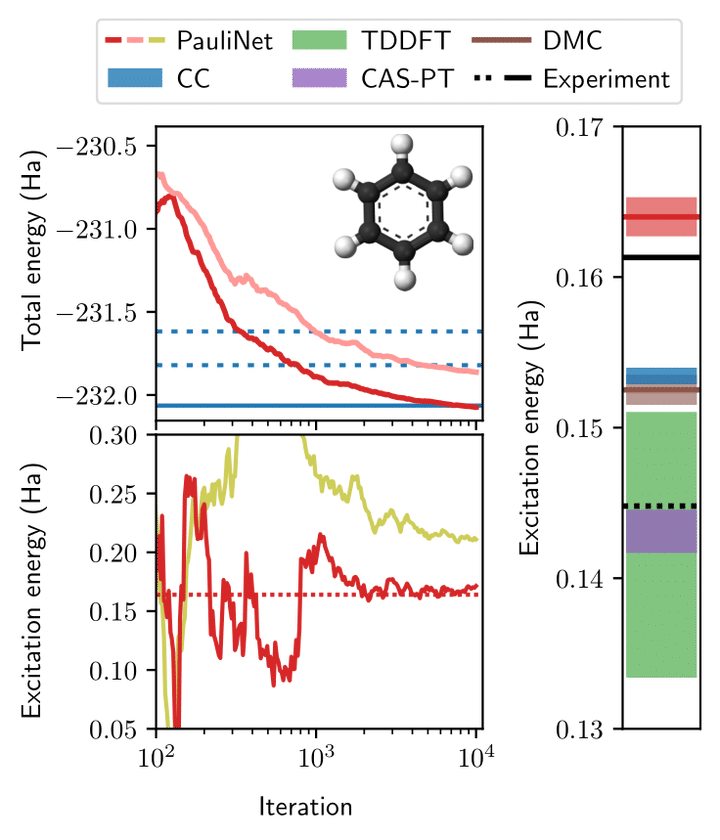
Abstract
Obtaining accurate ground and low-lying excited states of electronic systems is crucial in a multitude of important applications. One ab initio method for solving the Schrödinger equation that scales favorably for large systems is variational quantum Monte Carlo (QMC). The recently introduced deep QMC approach uses ansatzes represented by deep neural networks and generates nearly exact ground-state solutions for molecules containing up to a few dozen electrons, with the potential to scale to much larger systems where other highly accurate methods are not feasible. In this paper, we extend one such ansatz (PauliNet) to compute electronic excited states. We demonstrate our method on various small atoms and molecules and consistently achieve high accuracy for low-lying states. To highlight the method’s potential, we compute the first excited state of the much larger benzene molecule, as well as the conical intersection of ethylene, with PauliNet matching results of more expensive high-level methods.